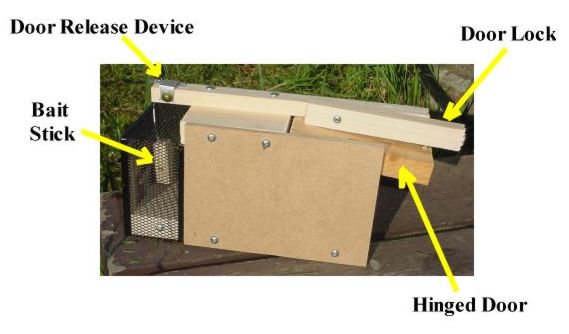
"Be Nice To Mice"
If you find small mammals living where they shouldn't be, live trapping and relocating these small animals is a humane solution to the problem.
The live trap described here is designed to safely capture small animals.
You must check your trap regularly as small animals are very stressed when
captured and
quickly dehydrate when they are without water. If you catch
a small animal in this trap you must disinfect the trap before handling
it and reusing it. A commercial disinfectant spray or a 10% solution
of common household bleach in a spray bottle is a good way to disinfect
this trap.


Attach memo tray to end of pine base using two 1/2" #6 pan head wood screws.
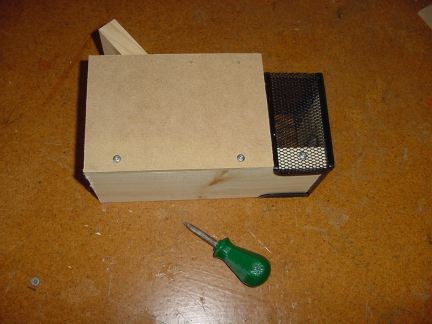
Attach sides to base with 3/4" #6 pan head wood screws.
Push the sides up tight to the screened box.
Note the top is being used as a support holding the side up.
Step 3
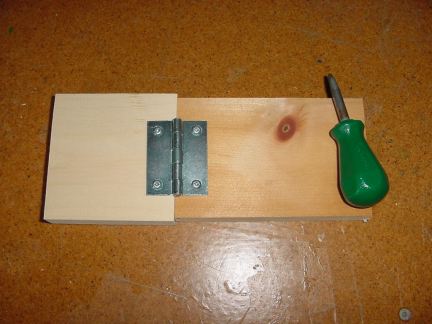
Attach a hinge to the top and door.
Note the door is narrower than the top.
Make sure you have everything centered.
Step 4
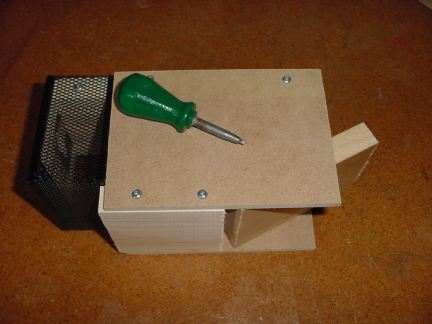
Attach the top to the sides.
Note that the hinged door is already attached to the top.
The hinge is inside allowing the door to fall down.
Step 5
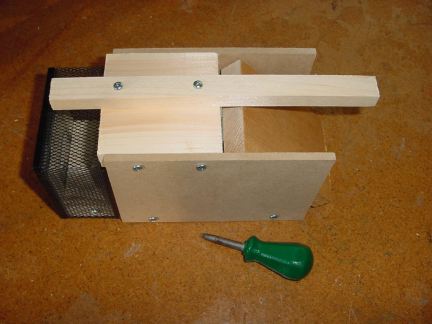
Attach the door support arm to the middle of the top piece.
Step 6
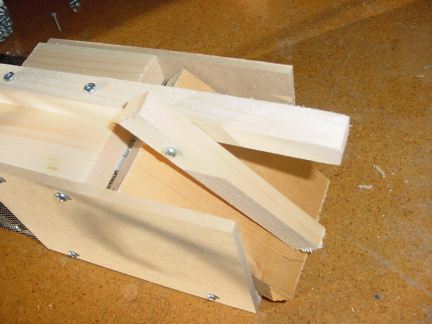
Use a 1" #6 screw to hold the door lock in place.
It must rotate freely.
Step 7
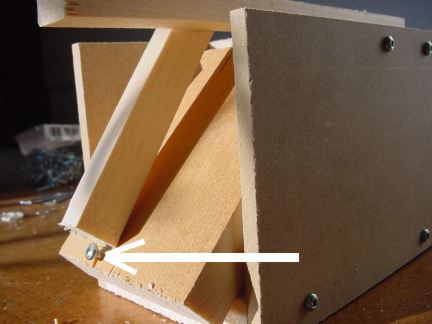
Locate a 1/2" #6 screw on the door at the bottom of the door lock.
This screw prevents the door from being opened.
Step 8
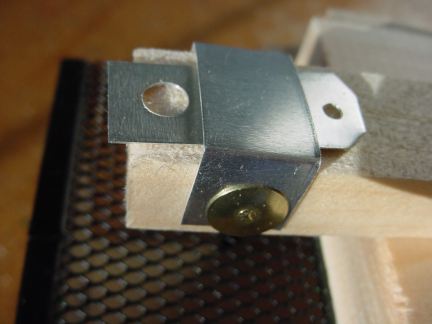
Close up of release mechanism. Note the bracket is held in place by
thumb tacks.
The small metal release bar slides under the bracket.
These brackets are made from thin aluminum - the type used in cookie
sheets.
Step 9
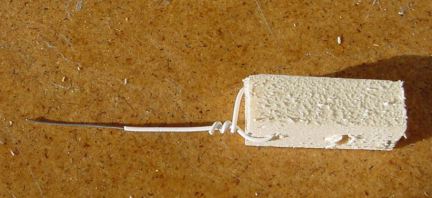
The bait stick is made from a short piece of wood with drilled holes.
A piece of wire holds the stick and connects it to the release device.
Step 10
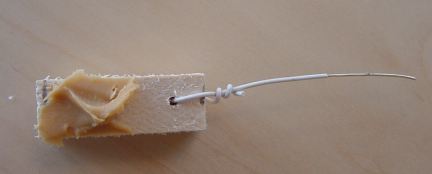
Bait the stick with some food. Cheese or peanut butter work well.
Caution: If you are
using peanut butter, make certain that no one with allergies to peanut
butter will be exposed.
Step 11
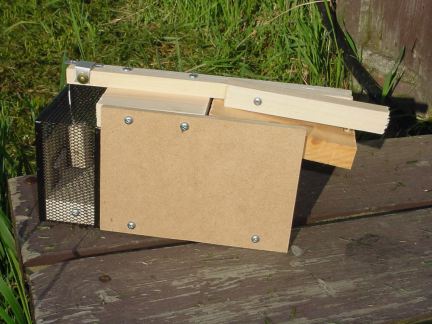
Tie a string to a hole in the end of the door, tie the other end of
the string to a hole
in the metal release bar. Pull the door up by the string. Place
the string over the end
of the door support arm. Slide the metal release bar under the
bracket and hold in place with
the wire attached to the bait stick.
(See pictures below)
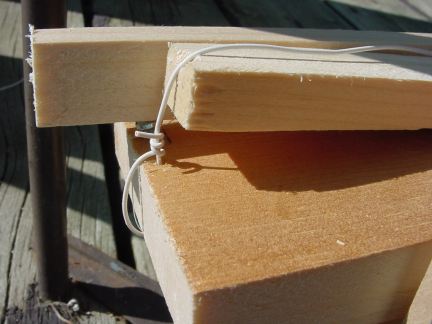
Door held up by string over support arm.
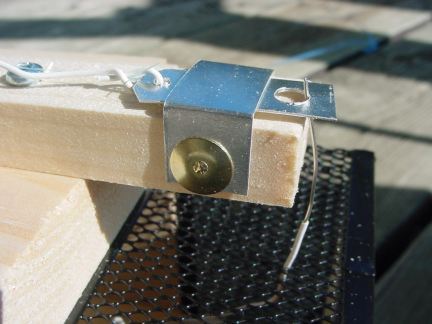
Other end of string held secure by trigger mechanism.
When animal pulls on bait stick, pulling wire down, the door falls.
Going further
A remote alarm would be an interesting addition to this humane live trap. Could you design a switch that would turn on a light or sound an alarm when the trap had been activated?
Caution!
Small animals can bite - particularly
when cornered and frightened.
Small animals can carry disease,
disinfect your trap before reuse with a spray disinfectant designed for
that purpose
or use a 10% solution of household
bleach.
Check your trap regularly, small
animals are very stressed when captured and dehydrate quickly when
they are without water. Release
them in a safe location as soon as possible.